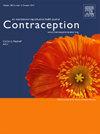2007-2024 年美国避孕药具临床试验中的种族和民族报告及代表性
IF 2.3
2区 医学
Q1 OBSTETRICS & GYNECOLOGY
引用次数: 0
摘要
目的避孕药临床试验为政策和实践变革提供信息,但参与者往往不代表美国人口。方法我们在 ClinicalTrials.gov 中以关键词 "避孕 "或 "避孕药 "查询了所有已完成的试验(2007-2024 年)。我们提取了所有种族和民族的参与者数据。如果未报告种族和民族数据,我们将人工审核链接的出版物。如果非白人参与者的比例在 2020 年人口普查估计值的 30% 以内,我们将试验归类为 "代表 "或 "不代表 "美国人口。我们使用卡方检验(IBM SPSS Version 29)描述并比较了报告和代表性的试验特征。结果我们审查了 129 项符合初始纳入标准的试验;其中 55 项因包括非美国研究机构或研究与避孕无关而被排除,剩下 74 项用于最终分析。大多数试验报告了种族或民族(85.1%),并且发生在西部地区(32.4%);43.2%的试验评估了药代动力学、安全性或有效性。68.9%的研究不代表美国人口。其中,82.4%的非白人参与者比例过高。试验阶段、资助者类型、完成年份、避孕方法和研究类型在 "有代表性 "和 "无代表性 "研究之间没有差异。要确保避孕试验具有多样性、包容性和充分的代表性,并且不会无意中过度招募在研究界历来受到虐待的人群,就需要采取深思熟虑的招募策略。本文章由计算机程序翻译,如有差异,请以英文原文为准。
RACE AND ETHNICITY REPORTING AND REPRESENTATION IN US CONTRACEPTIVE CLINICAL TRIALS FROM 2007-2024
Objectives
Contraceptive clinical trials inform policy and practice changes, yet participants are often non-representative of the US population. We aimed to characterize race and ethnicity reporting among completed contraceptive trials.
Methods
We queried ClinicalTrials.gov for all completed trials (2007–2024) with keywords “contraception” or “contraceptive.” We extracted all race and ethnicity participant data. If this was not reported, we manually reviewed linked publications. We categorized trials as “representative” or “non-representative” of the US population if the proportion of non-White participants were within 30% of the 2020 Census estimates. We described and compared trial characteristics for reporting and representation using chi-squared tests (IBM SPSS Version 29). The study included only publicly available data and was deemed exempt by the Colorado Multiple Institutional Review Board.
Results
We reviewed 129 trials meeting initial inclusion criteria; 55 were excluded for including non-US sites or the study was not related to contraception, leaving 74 for the final analysis. Most reported race or ethnicity (85.1%) and occurred in the West region (32.4%); 43.2% evaluated pharmacokinetics, safety, or efficacy. 68.9% were non-representative of the US population. Of those, 82.4% had overrepresentation of non-White participants. Trial phase, funder type, completion year, contraceptive method, and study type did not differ between “representative” and “non-representative” studies.
Conclusions
Race and ethnicity of participants in contraceptive trials are not representative of the US. Deliberate and thoughtful recruitment strategies are needed to ensure that contraceptive trials are diverse, inclusive, have adequate representation, and are not unintentionally over-recruiting populations with historical mistreatment within the research community.
求助全文
通过发布文献求助,成功后即可免费获取论文全文。
去求助
来源期刊

Contraception
医学-妇产科学
CiteScore
4.70
自引率
17.20%
发文量
211
审稿时长
69 days
期刊介绍:
Contraception has an open access mirror journal Contraception: X, sharing the same aims and scope, editorial team, submission system and rigorous peer review.
The journal Contraception wishes to advance reproductive health through the rapid publication of the best and most interesting new scholarship regarding contraception and related fields such as abortion. The journal welcomes manuscripts from investigators working in the laboratory, clinical and social sciences, as well as public health and health professions education.
 求助内容:
求助内容: 应助结果提醒方式:
应助结果提醒方式:


